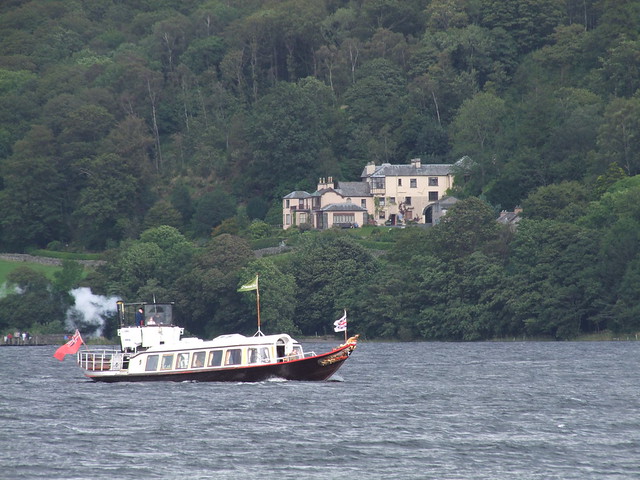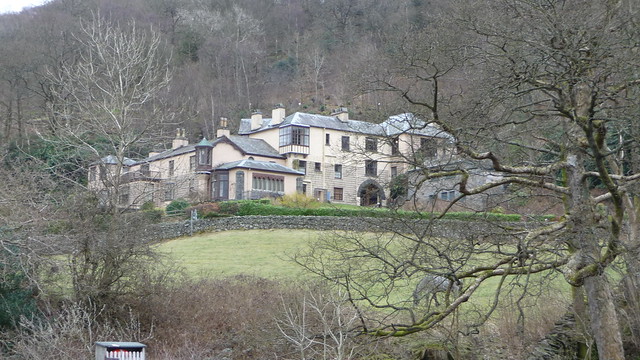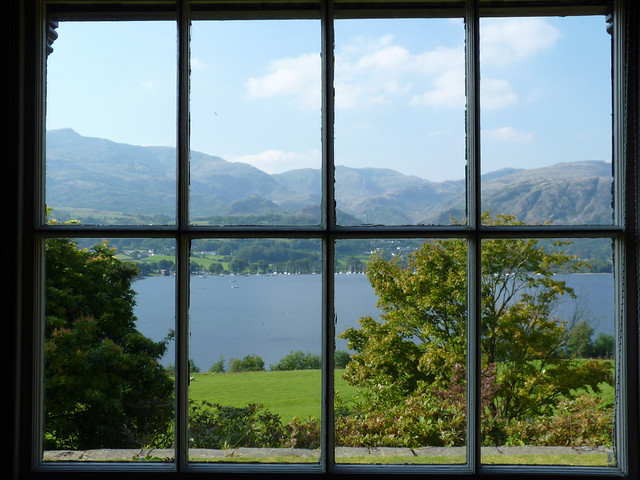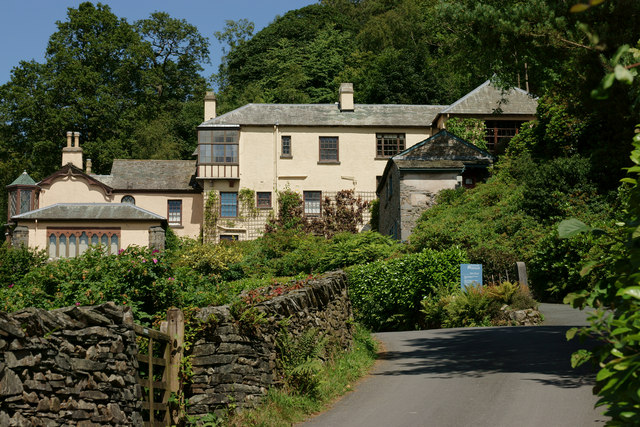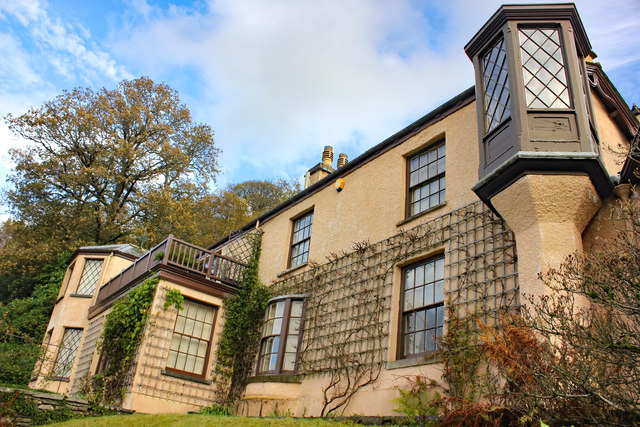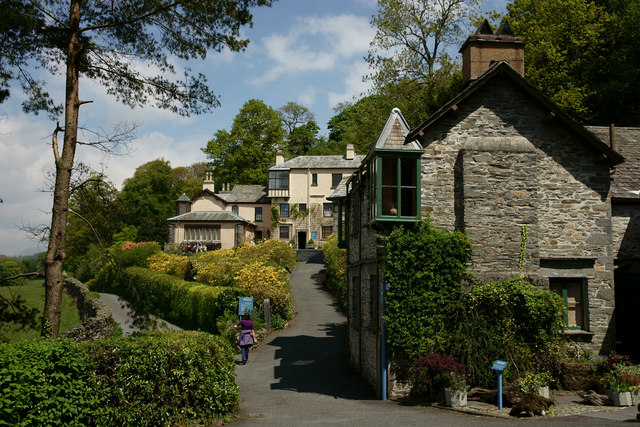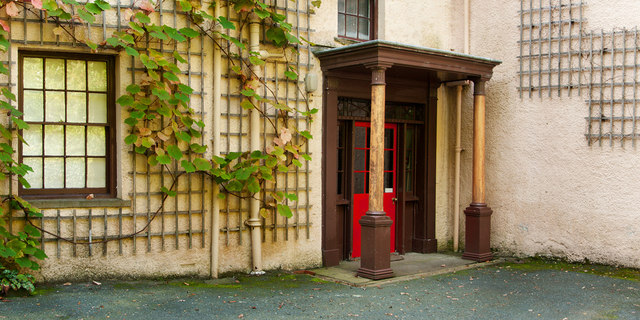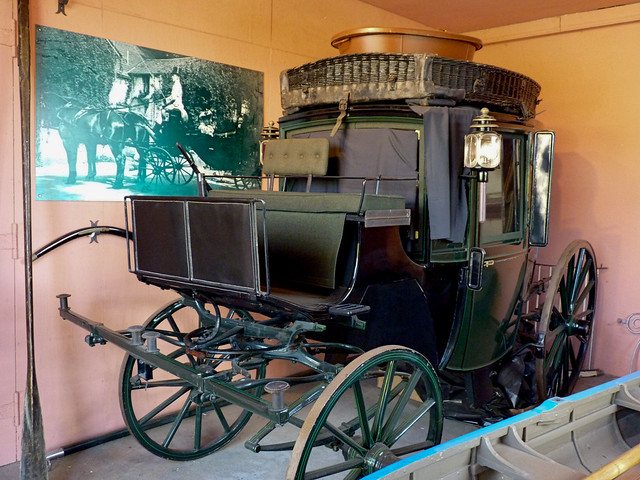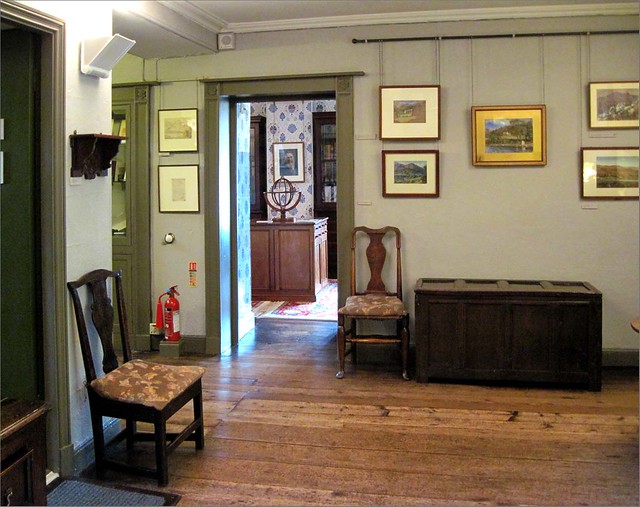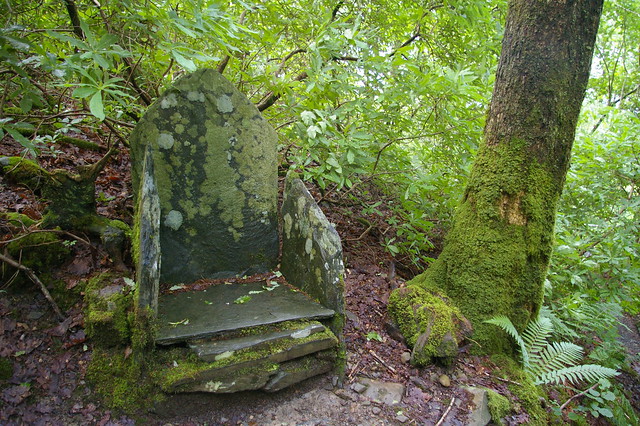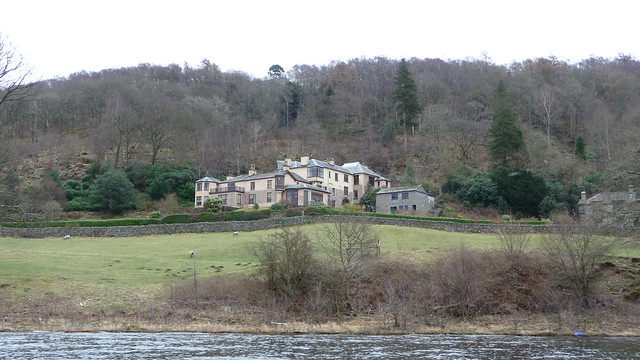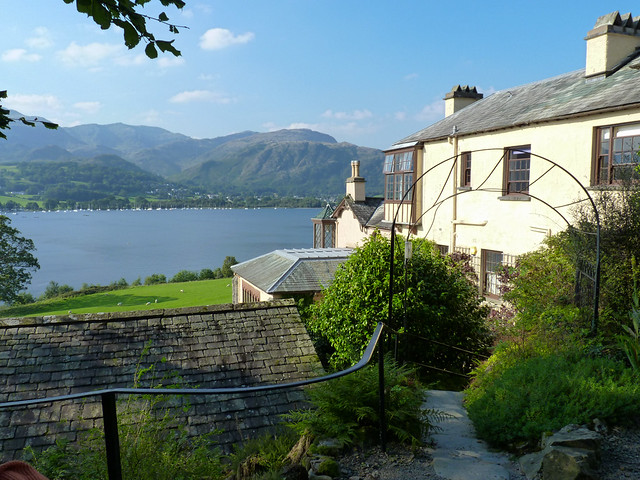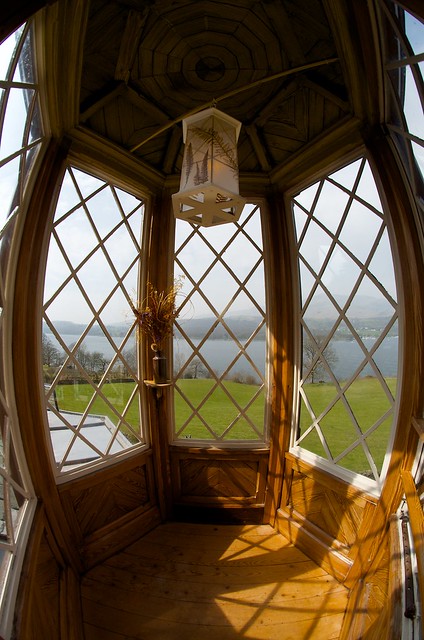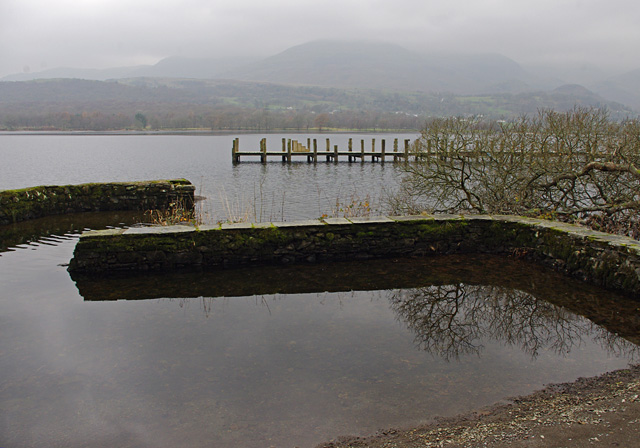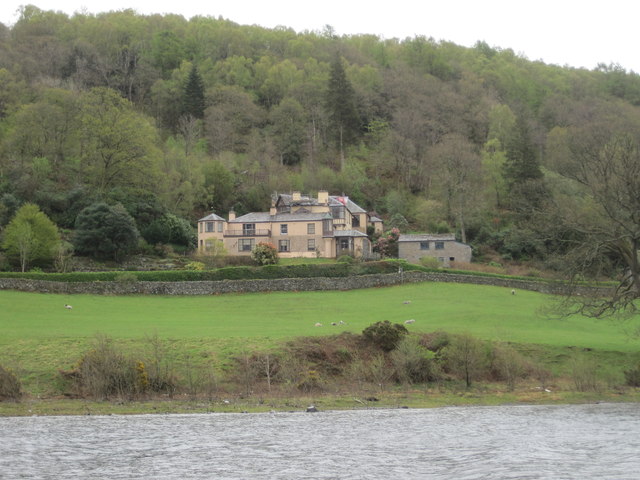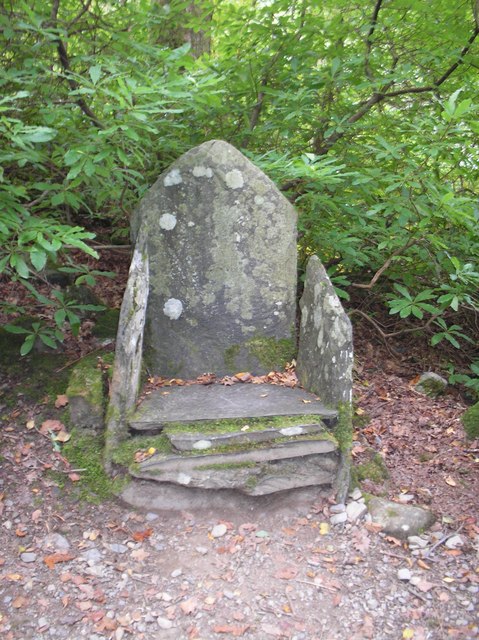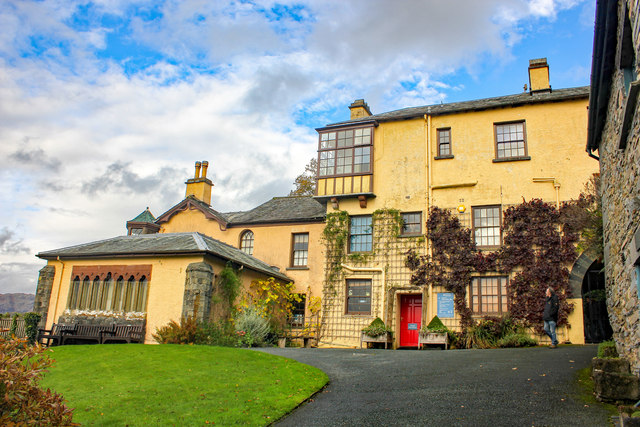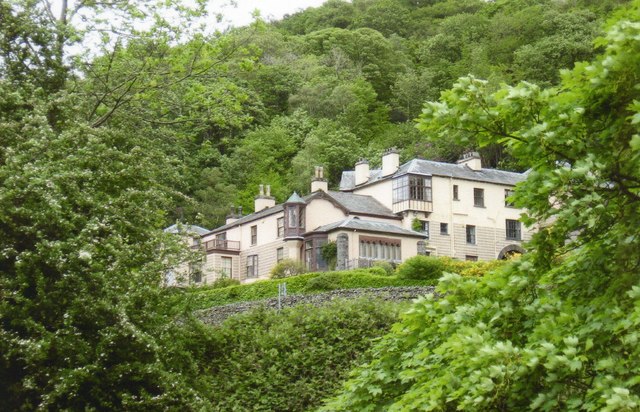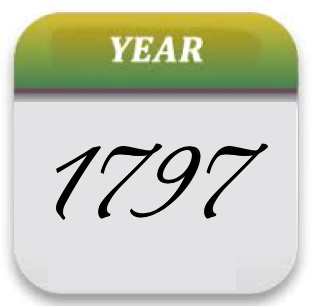Topics > Cumbria > Coniston > Brantwood
Brantwood
Brantwood is a historic house and museum located by Coniston Water and about one and a half miles south-east (across the lake) of the village of Coniston. The house was built in c.1797, with major extensions in 1833 and a turret added in 1871. Visitors can see artifacts of the house's most famouse resident: John Ruskin, the famous art critic and social reformer, who lived here from 1872 until his death in 1900. Over the years Brantwood was also the home of William Linton (wood engraver and revolutionary socialist) and his wife, Eliza Lynn (novelist), Gerald Massey (poet), and Arthur Severn (artist) and his family.[1] The house is Grade II* listed on the National Heritage List for England.
Brantwood is a historic house museum in Cumbria, England, overlooking Coniston Water. It has been the home of a number of prominent people. The house and grounds are administered by a charitable trust, the house being a museum dedicated to John Ruskin, one of its final owners. Brantwood is recorded in the National Heritage List for England as a designated Grade II* listed building, and buildings in the grounds are also listed.
History
Brant is an old Norse word meaning "steep" and the house and grounds are situated on a steep wooded area overlooking the lake. Before the house was built the site was regarded as an "essential viewing point" for early visitors to the Lake District in the 18th century. The original house was built at the end of the 18th century by Thomas Woodville and consisted of between 6 and 8 rooms. After a number of owners, the estate and house were enlarged around 1833. In the middle of the 19th century the resident was Josiah Hudson, father of Charles Hudson who was an Anglican priest and an early mountaineer.
In 1852 the resident was the Victorian wood engraver, poet, artist, book illustrator and social reformer William James Linton who bought the house the following year. Between 1858 and 1864, while Linton was living in London, the house was let to Gerald Massey, poet and Egyptologist. Linton emigrated with his children to America in 1867. In 1869, George William Kitchin, later Dean of Durham Cathedral, took up residence at Brantwood. In 1871 the house was sold to John Ruskin who it is claimed had never previously seen it. However, Kitchin and Ruskin were friends, having met at Oxford, so it is likely he may have had some prior knowledge of the property. Before Ruskin came to Brantwood in the following year, he arranged for repairs to the house, the addition of a turret, the building of a lodge for his valet and his family and for improvements to the garden.
For a short time during his stay at Brantwood, Ruskin held tutorial sessions, what would be called today as teaching seminars. These were held three times each week and each day a different subject was covered, namely Art, Literature and Sociology. His evening assistant when he was absent was a Richard Hosken who had been a former student.
When he was in residence, Ruskin filled the house with art, including paintings by Gainsborough, Turner and the Pre-Raphaelites and a collection of minerals, pottery and sea-shells. Ruskin was joined in the house by Arthur Severn, an artist married to Joan Agnew, his cousin and their growing family. A frequent visitor to the house was William Gershom Collingwood, painter, archaeologist and translator of Nordic sagas who lived nearby. In 1878, a new dining room was built at the south end of the house. A second storey was added around 1890 to provide additional rooms for the Severn family and a studio was built at the rear of the house for the use of Arthur Severn. During this time the estate was also extended.
Following the death of Ruskin in 1900, the house and estate were inherited by the Severn family. In Ruskin's will the wish was expressed that the house should be open for 30 days a year for visitors to see his house and collection. However the Severns did not honour this intention and they sold many of the better pictures. After the death of Arthur Severn in 1931 the remaining contents of the house were sold by auction. Emily Warren, John Ruskin's last pupil, instigated a successful movement to have Brantwood made into a museum. The house was saved for the nation by John Howard Whitehouse, founder of Bembridge School and of the Birmingham Ruskin Society, who bought the house. He established the Brantwood Trust in 1951 to care for the property for posterity.
House and grounds
The house is listed at Grade II*. The following rooms are open to the public. The drawing room still includes Ruskin's secretaire, bookcase and shell-cabinet. The wallpaper is a copy of Ruskin's design and his drawing of the north porch of St. Mark's, Venice hangs above the shell-cabinet. Next door is the study where Ruskin worked which contains a painting by Samuel Prout. The dining room, built in 1878, has views over to the Coniston mountains through its seven lancet windows. It contains a portrait of Ruskin aged 3 painted by James Northcote. The old dining room contains some early drawings by Ruskin. Upstairs in the turret is Ruskin's bedroom.
In the grounds are four more listed buildings. The lodge and former stable are listed at Grade II*. Listed at Grade II are the former coach house and stable, another outbuilding, and an ice house. In the Linton Room in the Linton Building there is a lithophone, called "The Musical Stones", which visitors may play.
The garden was used by Ruskin to experiment in various forms of cultivation and drainage and it contains a series of steep and winding paths. After his death more ornamental shrubs and trees were planted. The area then became overgrown until it was rediscovered in the 1980s and it has been much restored since. The estate covers around and includes lake shore, pasture, oak woods and moorland.
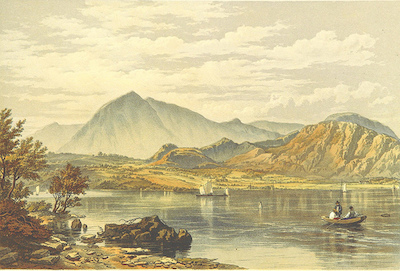
Co-Curate Page
Coniston Water
- Overview About Coniston Water Map Street View Coniston Water is 5 miles long and about half a mile wide, making it the third largest lake in the Lake District. It …

Co-Curate Page
John Ruskin (1819 - 1900)
- Overview About John Ruskin John Ruskin (1819 - 1900) was one of the leading visionaries and thinkers of the Victorian era. John Ruskin (8 February 1819 – 20 January 1900) …

from https://historicengland.org.u…
BRANTWOOD - Coniston - List Entry
- "House. c.1797, extended to rear and to right, c.1833; turret added, 1871; dining room added 1878; 2nd storey to rear wing added in 1880s, studio 1897; bay window and octagonal …
Added by
Simon Cotterill
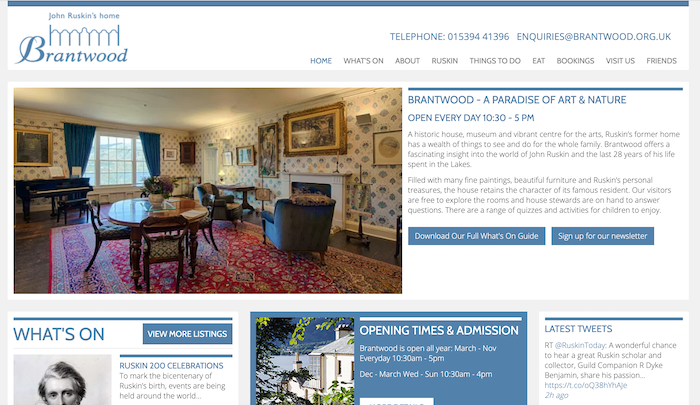
from http://www.brantwood.org.uk/
Brantwood
- Official Website of Brantwood with guest and visitor information. "A historic house, museum and vibrant centre for the arts, Ruskin’s former home has a wealth of things to see and …
Added by
Simon Cotterill

from https://commons.wikimedia.org…
William James Linton (1812 - 1897)
- Public Domain image c/o Wikimedia Commons.
Added by
Edmund Anon


Co-Curate Page
Coniston Water
- Overview About Coniston Water Map Street View Coniston Water is 5 miles long and about half a mile wide, making it the third largest lake in the Lake District. It …

Co-Curate Page
John Ruskin (1819 - 1900)
- Overview About John Ruskin John Ruskin (1819 - 1900) was one of the leading visionaries and thinkers of the Victorian era. John Ruskin (8 February 1819 – 20 January 1900) …

from https://historicengland.org.u…
BRANTWOOD - Coniston - List Entry
- "House. c.1797, extended to rear and to right, c.1833; turret added, 1871; dining room added 1878; 2nd storey to rear wing added in 1880s, studio 1897; bay window and octagonal …
Added by
Simon Cotterill

from http://www.brantwood.org.uk/
Brantwood
- Official Website of Brantwood with guest and visitor information. "A historic house, museum and vibrant centre for the arts, Ruskin’s former home has a wealth of things to see and …
Added by
Simon Cotterill

from https://commons.wikimedia.org…
William James Linton (1812 - 1897)
- Public Domain image c/o Wikimedia Commons.
Added by
Edmund Anon
List grade: 2*
Wikipedia: Brantwood
County: Cumbria
Post code: LA21 8AD
Grid ref: SD3125895854
